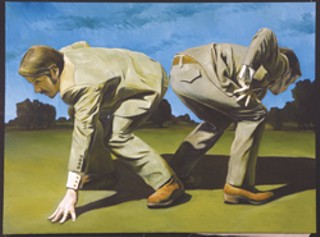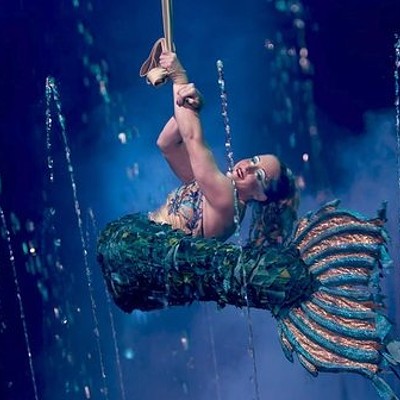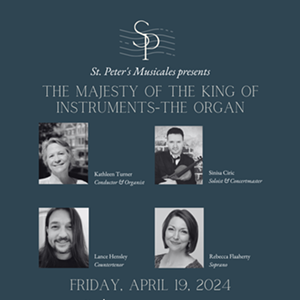In the first three of seven large oil paintings, three characters, two men and a woman in dressy casual garb, are engaged in trading places as the burden the others must carry. In the first, “Exit Strategy, No. 1”, the two men are carrying the woman; in the second, “Once Removed”, one man and the woman carry the other man; and in the third, “Exit Strategy, No. 2”, the logical remaining combination occurs.
When three characters are engaged in an activity, a narrative is implied. But in this case, there is no further progression of these images, so any narrative is stalled.
Perhaps because this game can go no further, Eltringham has had to devise new games to continue the series. So in “Overarching,” we see two ballet dancers in an arch formation; in “Third Down”, six identical women in pink suits and high-heeled shoes are facing off in a line of scrimmage. This football position is slightly altered in “Texas Two Step”, in which two identical men in western-type clothing and cowboy boots, take the same position but are back to back. Finally, in “Training Camp”, the chosen game is leap-frog, in which men are crouched and women are doing the leaping.
What is the theme that runs through all these works? Aside from the first three, it cannot be anything to do with a “burden”. And surely it is not simply the joke of inappropriate dress for game time. The figures might suggest humiliating or uncomfortable positions enforced by powers outside the frame. The games might reference corporate training sessions where up and coming young executives are tested for undisclosed traits. But what really holds these works together is the way they are painted.
Every work seems to have been created from photographs taken inside and using harsh, studio lighting. They are consistently lit from the left side, casting dark shadows to the right. The characters are then placed in the center of an open green field, bordered by dark trees against a deep twilight blue sky. The effect of the studio lighting is to make us feel that there is a spotlight on the figures. A night game?
The paint handling is something often referred to as “painterly photo-realism.” This is both attractive and repulsive. It attracts because it shows a level of skill and it repulses, strangely, for the same reason: its facility. The scale and the speed with which these paintings were made (all between 5-7’ and all done in 2007) ensures a sketchy quality.
Paul Valéry wrote that the purpose of criticism is to discover what the artist intended, and see how well he had achieved those intentions. In these days, it is not up to the critic to try to discover what the artist intends, because all artists hand out “artist statements.” But artist’s statements, like all statements, are open to interpretation and usually leave us where we began, looking at the paintings.
In his statement, Eltringham writes: “...What interests me is what happens to us within our allotted space. We have all been given boundaries and directions to follow. We share a finite world. A world driven by chance. This is both paralyzing and liberating. Hence we look for security. Instructions are given; there is no need for panic. Are we blind?”
Games played by clones in an empty field without direction, without communication, without hope (which serves us through Chance). There is paralysis here, but no sign of liberation. It is the security of a concentration camp. Instructions are internalized. The clones are self-censored. Even panic is forbidden. This is a frightful and dystopic vision. The paint handling and the content are in tune. 
‘Take the Burden is at Pinnacle Gallery, 320 E. Liberty St., through Oct. 7.
Bertha Husband graduated from the Ruskin School of Fine Art at Oxford University and has an MFA from the School of the Art Institute of Chicago.
She has been writring art criticism for over 20 years in publications that include Chicago Reader, Art Papers, Third Text and Left Curve.

























